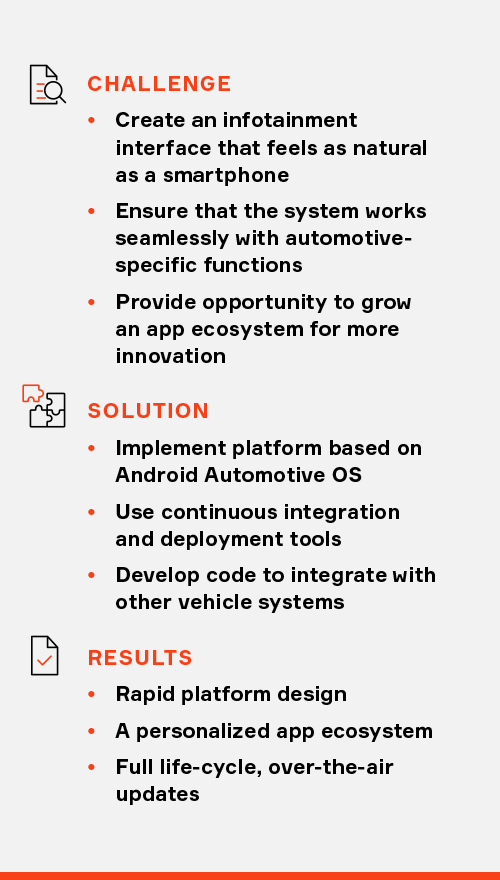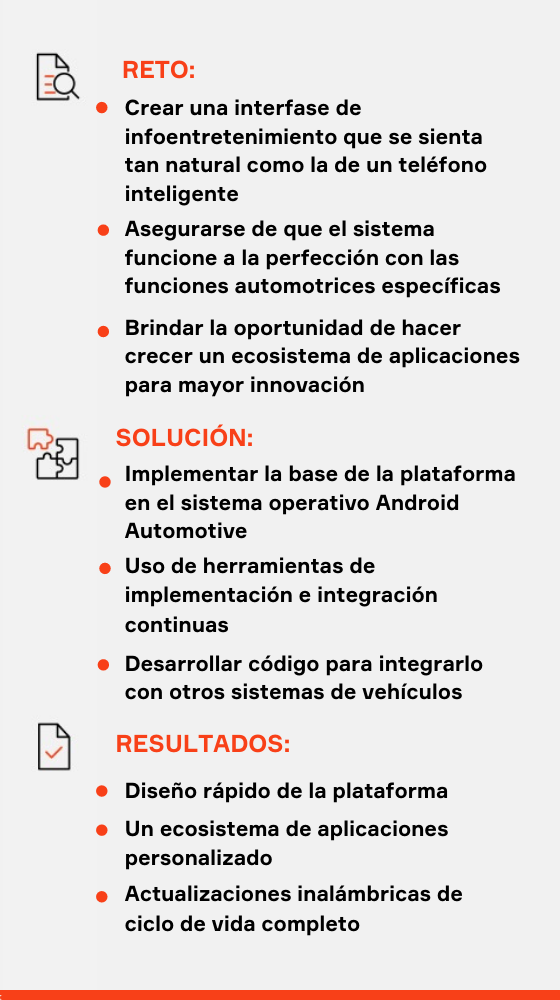Volvo/Polestar Infotainment System Built on Android Automotive OS
Using an Android Automotive-based platform, Aptiv and Volvo/ Polestar collaborated to create a next-generation infotainment system for the OEM’s latest electric vehicles, including the Polestar 2 and the Volvo XC40.
How the process worked
Aptiv and Volvo worked with Google and led the development and integration of Android Automotive OS with the vehicles while gaining early access to Android updates and features. The teams worked intensely together throughout the program, and the nuts-and-bolts development occurred in two-week increments with features constantly modified and improved.
In the course of working with the core Android system, Aptiv developers delivered code changes and suggested enhancements to Google as part of its open source contribution. Those adaptations focused on features such as audio, tuner, power management, diagnostics and others, especially designed to function in a moving vehicle and to integrate with other vehicle systems.
The platform has several layers, starting at the hardware layer with a system-on-a-chip (SoC) and hardware peripherals. On top of that, Aptiv developed hardware abstraction layer (HAL) implementations, vehicle-specific libraries, frameworks and applications. Google provided the Android runtime, Android native libraries, the Android framework and applications.
API advantage
Each team brought its own particular skills to the development process. Aptiv’s expertise in areas of automotive hardware design and industry regulations helped Google and Volvo define and develop APIs for Android Automotive.
These vehicle APIs, part of Google Automotive Services and the Android Software Development Kit (SDK), allow OEMs to focus on differentiating applications rather than the details of making the functions work.
Aptiv’s definitions of the HAL in areas of audio, tuning and power management helped the new system meet “instanton” requirements. In other words, when a driver turns on the vehicle, critical functions are operational immediately.
Testing for all conditions
Aptiv ran a comprehensive battery of tests on the device to ensure it could operate effectively in a vehicle, including tests conducted in extreme temperature conditions – from -40˚C to 75˚C – and more than 1.5 million tests required by Google for Android devices.
Automating this massive number of tests is essential for enabling continuous improvement and continuous development, as each change is quickly tested and verified.
Aptiv and other stakeholders are working on a model for lifecycle management and maintenance to ensure the longevity of the delivery platform. While Volvo and Aptiv were the first to market with a native Android infotainment platform, other OEMs have since announced plans to follow suit, which signals that the larger application ecosystem is off to a promising start.

